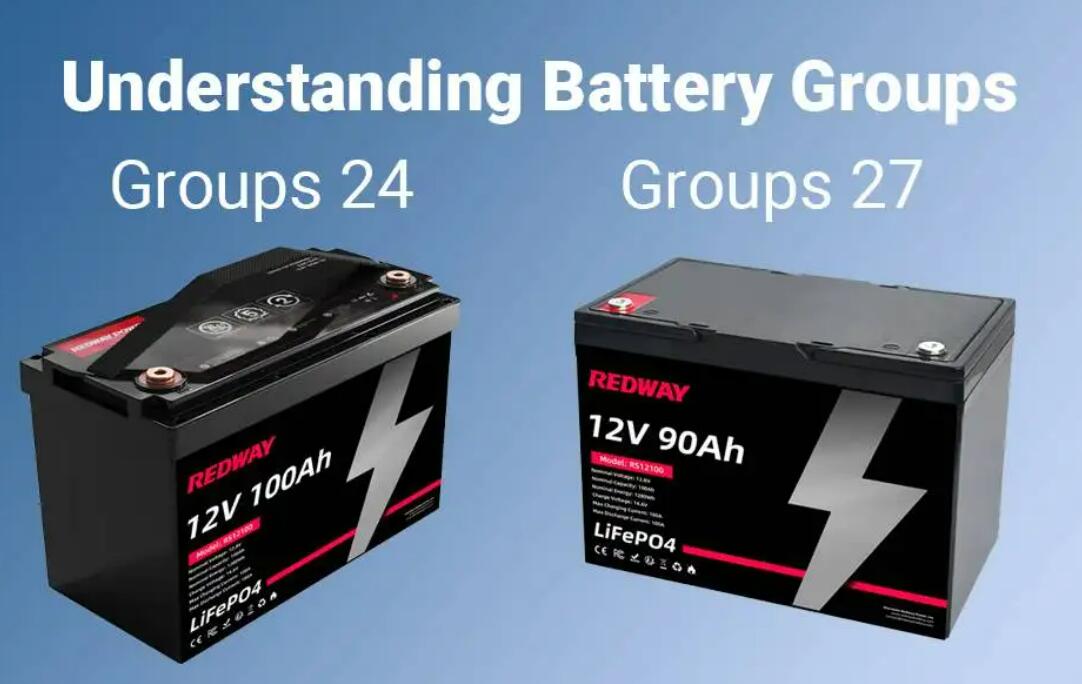In the ever-evolving landscape of battery technology, the choice between Group 27 and Group 24 batteries can be pivotal. Redway Power, a leading name in energy solutions, is proud to shed light on the nuances differentiating these two battery groups, empowering consumers to make informed decisions tailored to their specific needs.
As the automotive and marine industries continue to advance, selecting the right battery becomes increasingly crucial. With options aplenty, understanding the disparities between Group 27 and Group 24 batteries is paramount for optimal performance and efficiency.
The comprehensive exploration provided by Redway Power delves deep into the unique features of each battery group. From dimensions to capacity, from application suitability to pricing dynamics, every aspect is meticulously examined to guide consumers through their decision-making process.
“Choosing the ideal battery can be overwhelming,” acknowledges Redway Power’s spokesperson. “That’s why we’re committed to providing clarity and insight into the differences between Group 27 and Group 24 batteries. We believe that an informed consumer is an empowered consumer.”
Key highlights of the discussion include:
- Understanding Battery Groups: An elucidation of the standardized sizing codes and their significance in conveying vital information about battery specifications.
- Group 27 Batteries: A detailed examination of the physical dimensions, weight range, reserve capacity, and cold cranking amps of Group 27 batteries, alongside their applications and benefits.
- Group 24 Batteries: Insights into the versatility, compact size advantage, compatibility across applications, and low maintenance requirements of Group 24 batteries, including their key features and applications.
- Key Differences: A comparative analysis elucidating the disparities in dimensions, capacity, terminal types, and price dynamics between Group 27 and Group 24 batteries, guiding consumers towards informed decisions.
- Applications and Considerations: Expert advice on selecting the right battery based on specific vehicle or marine requirements, encompassing factors such as space constraints, capacity needs, terminal preferences, and budget considerations.
Also, 18650 vs 14500 battery comparison is introduced.
In the realm of lithium-ion rechargeable batteries, the 18650 and 14500 are commonly used in various electronic devices. Let’s compare them based on key dimensions:
- Size: The 18650 is larger, measuring 18mm in diameter and 65mm in length, while the 14500 is smaller at 14mm in diameter and 50mm in length.
- Capacity: The 18650, being larger, typically boasts a higher capacity, such as 1000mAh to 3500mAh, compared to the 14500 with a typical capacity of 600 – 1200mAh.
- Voltage and Applications: Both batteries share a nominal voltage of 3.7 volts, but the 18650 is preferred in applications requiring higher capacity and longer run times, like laptops and electric vehicles. The 14500 suits smaller devices like cameras and remote controls.
In summary, the 18650 offers greater size, capacity, and current delivery, while the 14500 is compact and suitable for less power-demanding applications.
Redway Power’s dedication to providing comprehensive information ensures that consumers are equipped with the knowledge necessary to navigate the battery market confidently. By elucidating the differences between Group 27 and Group 24 batteries, Redway Power continues its mission to empower consumers and drive innovation in the energy sector.
For more information and to embark on your journey towards battery enlightenment, visit Redway Power’s website and explore their range of energy solutions.
Media Contact
Company Name: Redway Power, Inc.
Contact Person: Mr. Smith
Email: Send Email
Phone: +86 (755) 28010506
City: Shenzhen
State: Guangdong
Country: China
Website: https://www.redwaypower.com/

